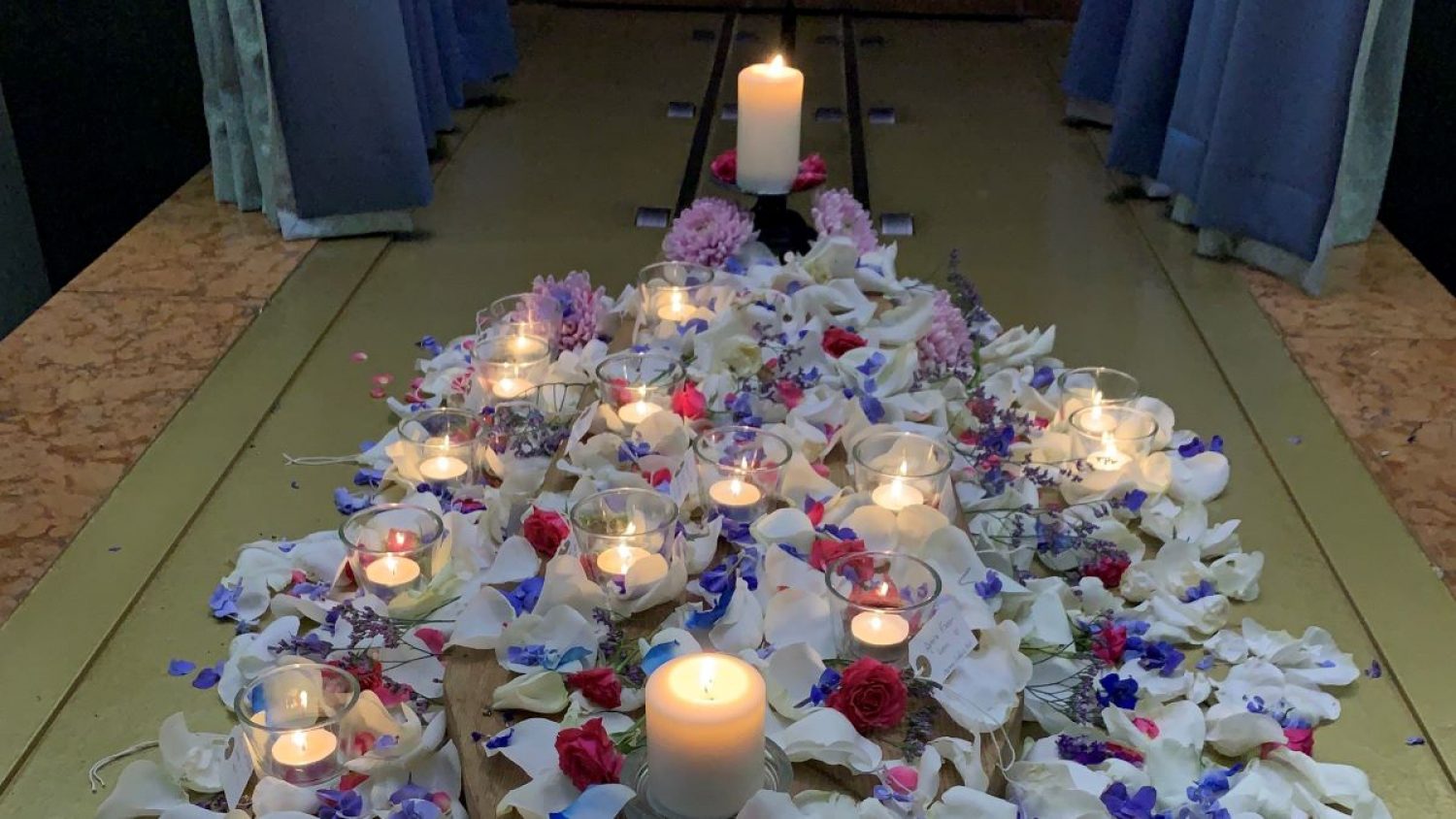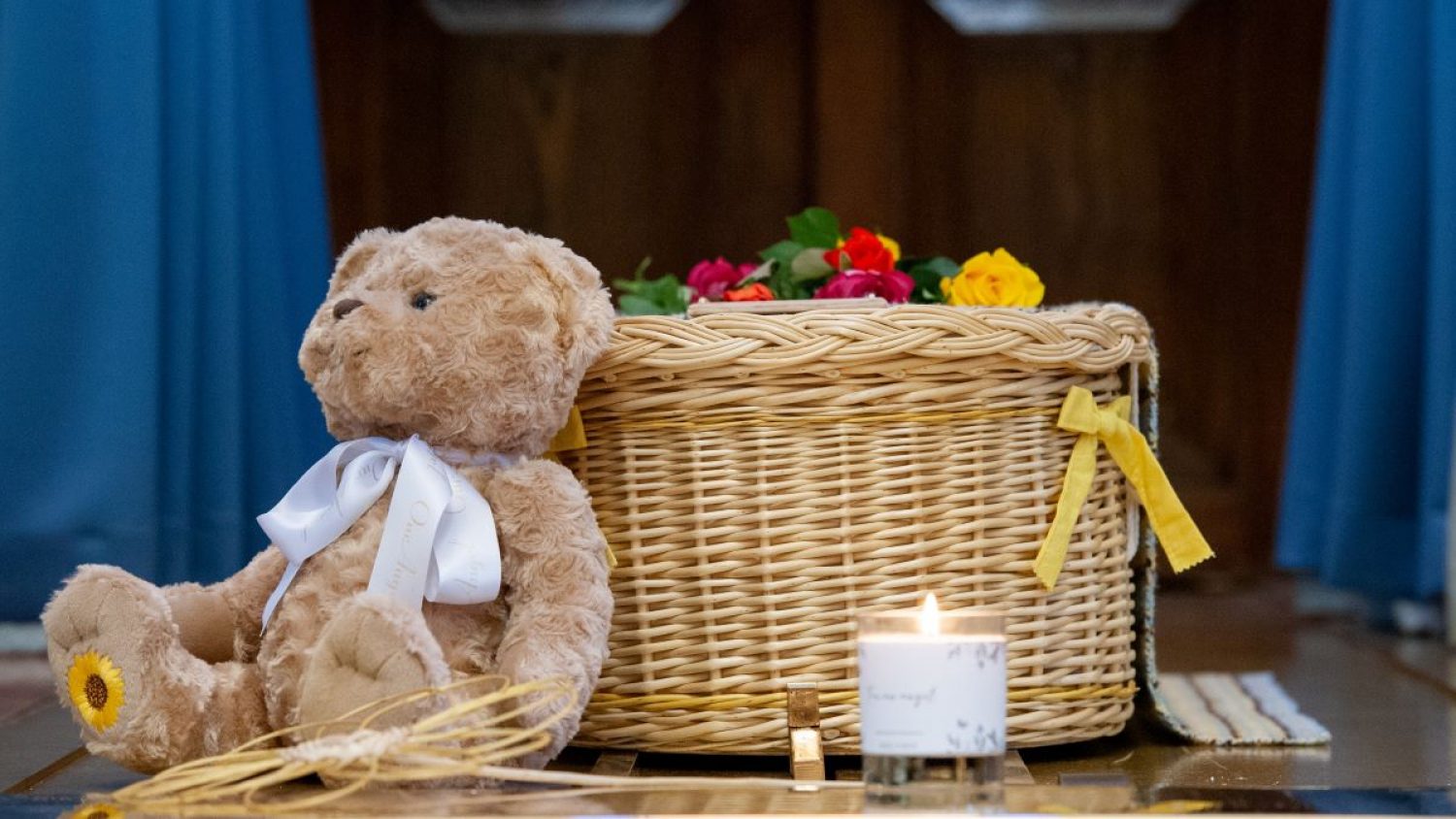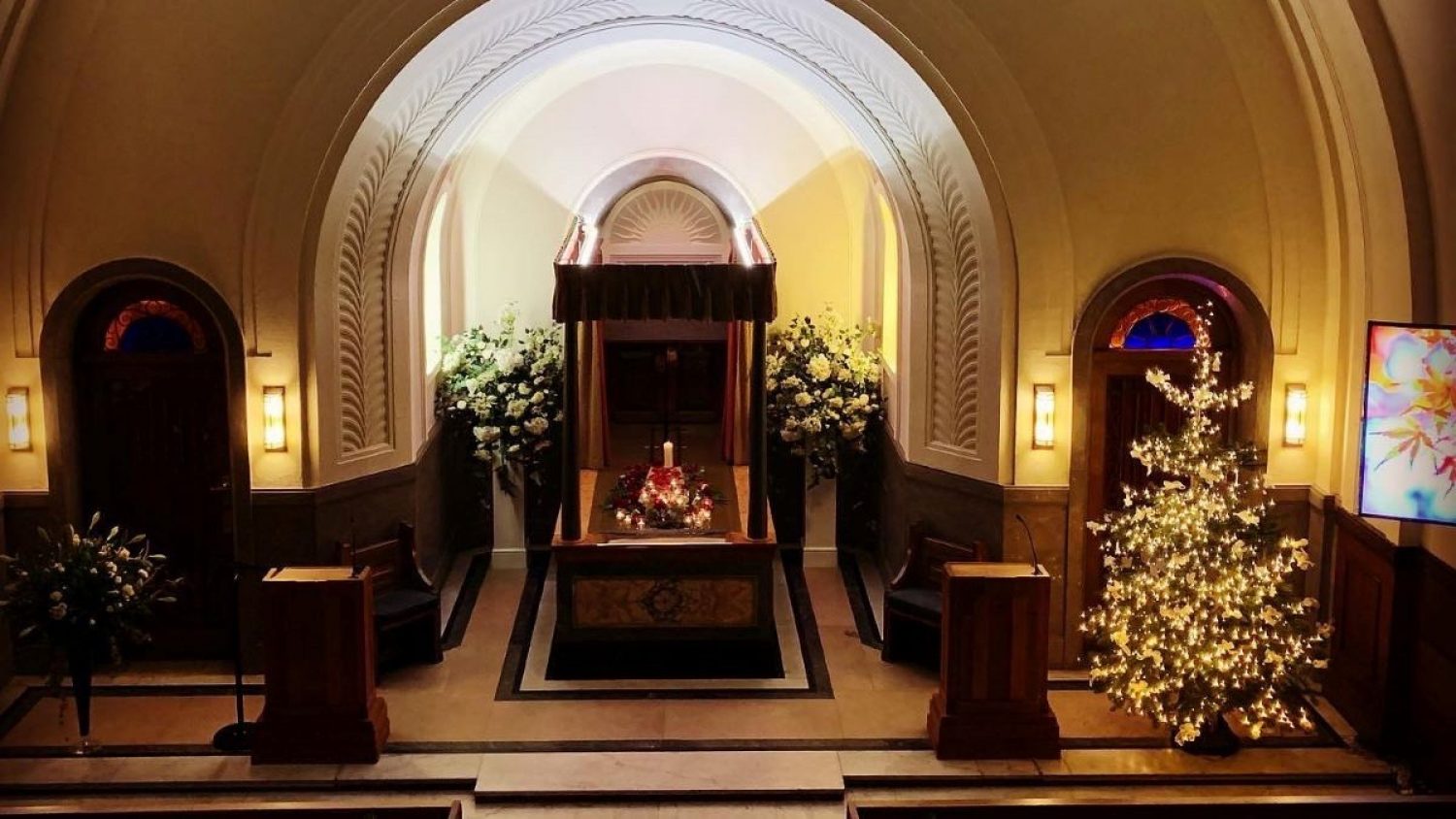Four minute read
For Baby Loss Awareness Week (9–15 October), we spoke to Natasha Bradshaw, from Mortlake Crematorium in west London, about how her team supports families before, during and after their baby’s funeral.
Mortlake’s approach — one which Natasha believes is possible for all crematoria to adopt — is to be open, honest and empower a family planning a funeral with options at every stage.
Follow Mortlake Crematorium on instagram for news and events
Find grief and bereavement resources to help you after a baby, child or young person has died
Preparing for a baby’s funeral
“We support families before, during and after the service,” Natasha says. “They come to meet me, to see the chapel and look around. I go through the journey of the day with them. They are often young people who might never have attended a funeral before, so they don’t know what to expect.
“I show them the space, but I also have a beautiful album of photos, so they can see what it looks like for a funeral with a small coffin. The catafalque [raised platform to support the coffin] is very large, so we put a smaller, wooden board on top. There is space for candles and flowers as well as the coffin.”
What happens on the day of the funeral
Each funeral will be different, depending on what the family wants and needs, and will be arranged at a date and time of the family’s choice.
“Some families will lead the ceremony themselves, others will ask a celebrant or a minister,” explains Natasha. “The family can decorate the space as much or as little as they want. They can have photos or videos up on the screen, and we welcome people to take photos at any stage. Some will stand around the coffin. Sometimes they are just in silence.
“Other relatives — like grandparents, aunts and uncles — often worry about what they can or can’t do. We encourage them to consider what they would have wanted to do for a christening or naming ceremony.
"Some will do readings, write letters or bring photos. They might say or write the hopes that they had for the baby. If there are other siblings, they might bring a toy to give to the baby. Once they get going, they make it so beautiful.
“The hardest bit for the parents is often leaving after the ceremony. We don’t close the curtains. We’ll help other family members to leave, so that the parent or parents can have time with the baby alone. Some might put a blanket on the coffin as a final symbolic gesture.
“From the chapel, they can go to the babies’ memorial garden, where some families choose to release balloons or doves. There is also a memorial tree where they can have a leaf.”
Partnership working is very important to ensure that families get the support that they need. Most crematoria will work closely with the local hospital — in Mortlake’s case, this is the Chelsea and Westminster. They also have strong links with the charity SANDS, so that all three can offer support to a family whose baby has died.
Natasha continues: “Midwives know that we help families take control over their service. We also recommend the SANDS app that gives suggestions of what you can do. It’s useful, because if you are grieving you can’t hold all the information in your head all the time.”
They also flag up the Children’s Funeral Fund, which offers a funeral grant for children who die after 24 weeks gestation, to enable every family to have a funeral.
After the funeral and into the future
The care and the connection with the crematorium doesn’t stop once the ceremony is over.
“We have a candle burning during the service. When we give the ashes back to the family, we give the candle and a copy of the story behind our memorial garden too. We always ask whether families have any questions, and people often ask about the ashes. We explain how we put the small coffin on a metal tray and all that remains in the tray is given back to the family.
“We are honest with them — they will have been told all sorts of different things about the ashes that aren’t necessarily true. We’ll also make sure that if one parent wants to know something and the other doesn't, we respect that.
“Families can come back and visit the memorial garden any time they want. You see families come back on special days — Christmas, the due date or birthday, or if they have another child. Some will run the 5k Park Run with us for Grief Awareness Week in December.
"We have a memorial service for Baby Loss Awareness Week and at Christmas, and host the Chelsea and Westminster hospital memorial service on 29 October.”
More information about all of these events
Baby Loss Awareness Week gives us the opportunity to remember and support families whose baby has died, and to spotlight the work of crematoria, charities, funeral directors, NHS staff and many others who reach out with care and support all year round.
At the end of Baby Loss Awareness Week, a wave of light is created by people around the world lighting candles. Mortlake Crematorium Chapel is open at this time for people to light a candle and spend time in the chapel.
We hope you will find the links in this blog to external resources to be helpful. There is also more about planning a funeral for a child or young person here and you can find a full list of grief and bereavement support services here.
To stay in touch with all the latest news and updates from Poppy's by email, sign up here or contact us if you need help planning a funeral.



